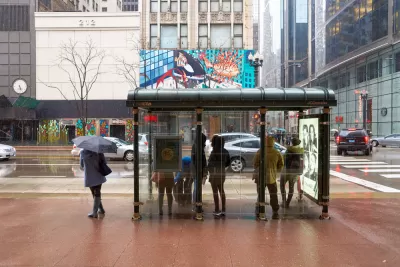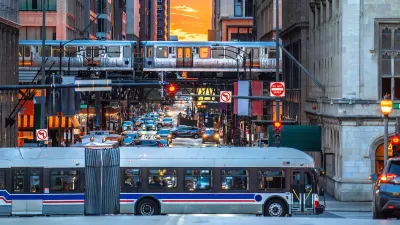Transit agencies use complex models to predict future ridership, but these have not yet caught up with the still-changing post-pandemic travel needs of transit users.

With post-pandemic travel patterns still in flux, predicting transit ridership is becoming more challenging than ever, writes Jared Brey in Governing.
Despite the growth of sophisticated modeling methods in recent years, the most that many transit agencies can say at this point is that “The future is either going to be very bleak, surprisingly OK, or, in all likelihood, an unpredictable mixture of the two.” Brey explains that “Transit agencies try to predict future ridership for all types of scenarios — not just when making their yearly budgets but also when considering the impact of service changes or fare increases, and when applying for funding to build out new bus and train lines.” Now, agencies must collect new data to understand how the needs of transit users are changing.
Brey points out that even though ridership projections are used in federal grantmaking, “projections made in decades past have often proven to be wildly off-base.” More recently, agencies receiving New Starts federal grants are required to provide before-and-after studies to assess the accuracy of their projections.
Carole Turley Voulgaris, an assistant professor of urban planning at the Harvard Graduate School of Design, notes that “In some ways, the roughly sketched scenarios that many transit agencies are projecting in their budget documents have an advantage over highly complex processes that are used to generate a single prediction of the most likely future scenario.” With so much uncertainty still looming, understanding the range of possible scenarios can help agencies plan more effectively for a variety of future situations.
FULL STORY: Predicting Future Transit Ridership Is Trickier Than Ever

Manufactured Crisis: Losing the Nation’s Largest Source of Unsubsidized Affordable Housing
Manufactured housing communities have long been an affordable housing option for millions of people living in the U.S., but that affordability is disappearing rapidly. How did we get here?

Americans May Be Stuck — But Why?
Americans are moving a lot less than they once did, and that is a problem. While Yoni Applebaum, in his highly-publicized article Stuck, gets the reasons badly wrong, it's still important to ask: why are we moving so much less than before?

Using Old Oil and Gas Wells for Green Energy Storage
Penn State researchers have found that repurposing abandoned oil and gas wells for geothermal-assisted compressed-air energy storage can boost efficiency, reduce environmental risks, and support clean energy and job transitions.

Greening Oakland’s School Grounds
With help from community partners like the Trust for Public Land, Oakland Unified School District is turning barren, asphalt-covered schoolyards into vibrant, green spaces that support outdoor learning, play, and student well-being.

California Governor Suspends CEQA Reviews for Utilities in Fire Areas
Utility restoration efforts in areas affected by the January wildfires in Los Angeles will be exempt from environmental regulations to speed up the rebuilding of essential infrastructure.

Native American Communities Prepare to Lead on Environmental Stewardship
In the face of federal threats to public lands and conservation efforts, indigenous groups continue to model nature-centered conservation efforts.
Urban Design for Planners 1: Software Tools
This six-course series explores essential urban design concepts using open source software and equips planners with the tools they need to participate fully in the urban design process.
Planning for Universal Design
Learn the tools for implementing Universal Design in planning regulations.
Heyer Gruel & Associates PA
City of Moreno Valley
Institute for Housing and Urban Development Studies (IHS)
City of Grandview
Harvard GSD Executive Education
Salt Lake City
NYU Wagner Graduate School of Public Service
City of Cambridge, Maryland





























